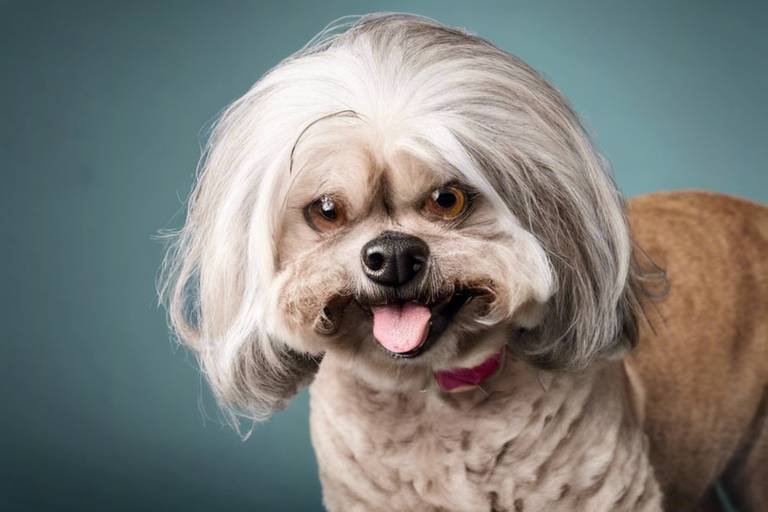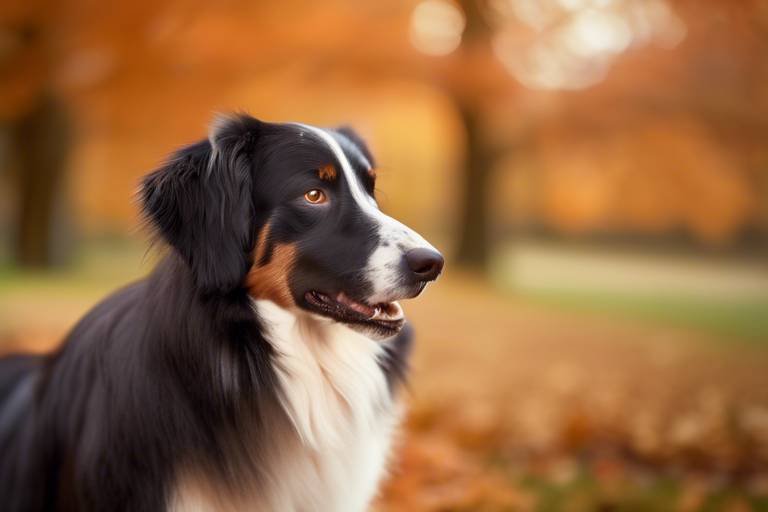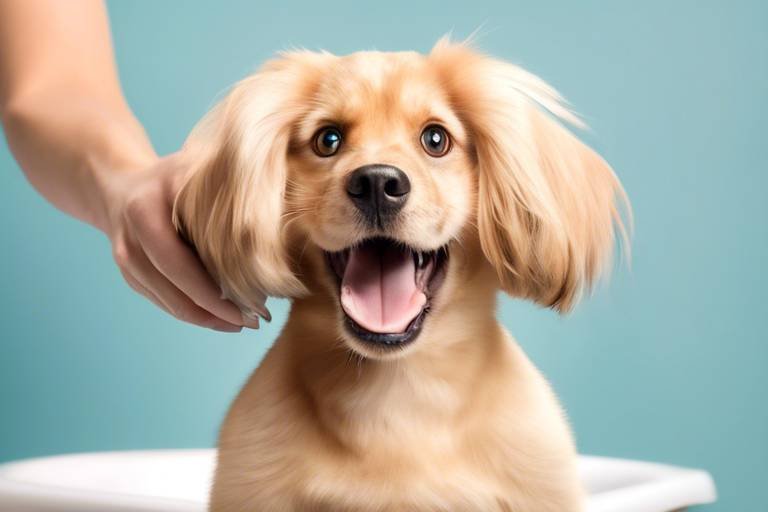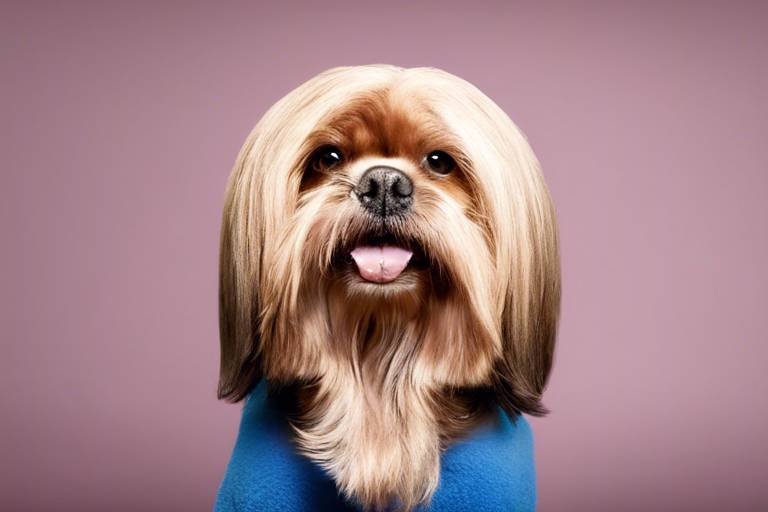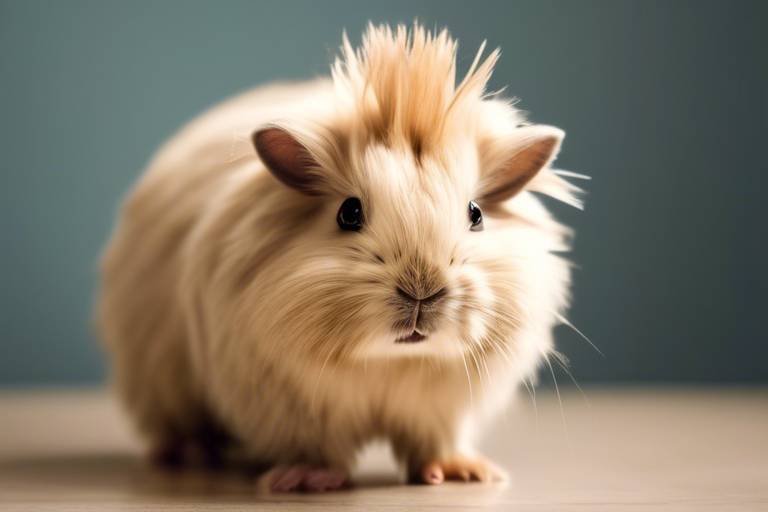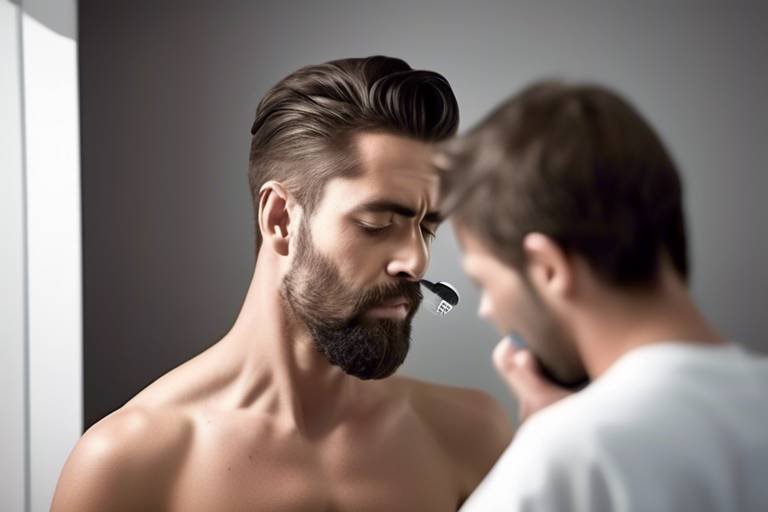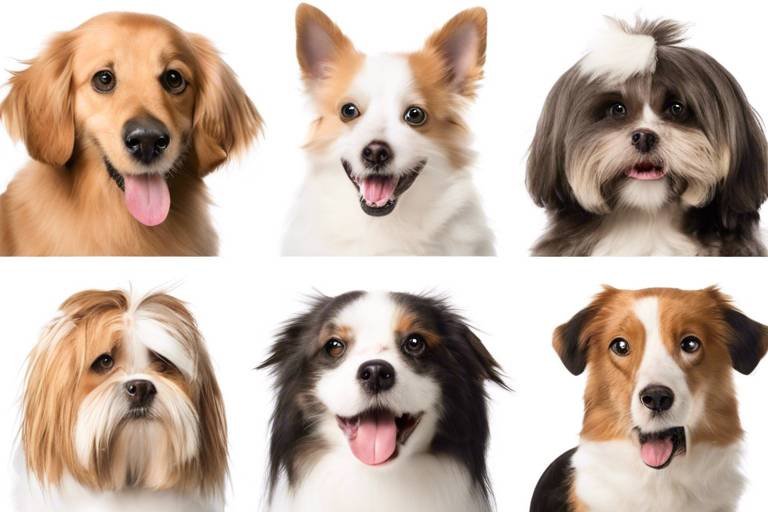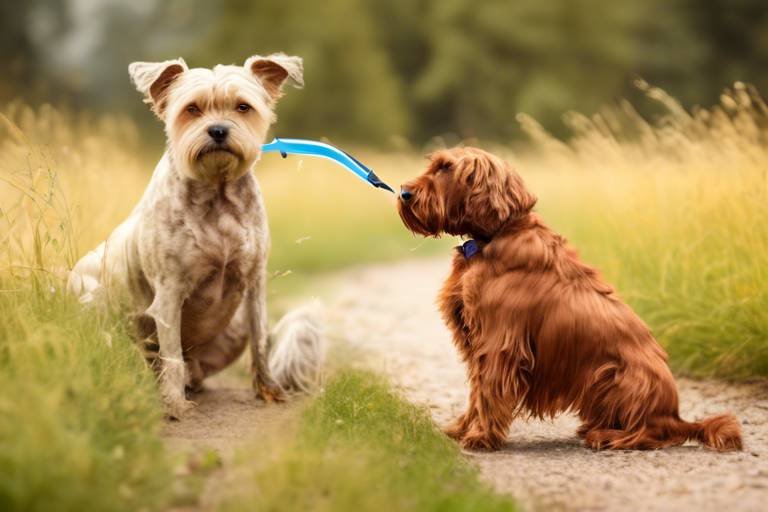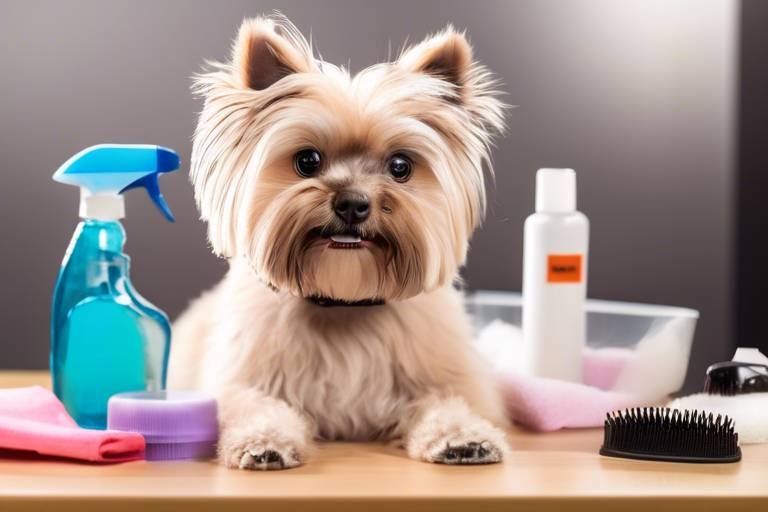Tips for Grooming Senior Pets
This article provides essential tips for grooming senior pets, ensuring their comfort and well-being. Learn how to adapt grooming routines to accommodate the unique needs of older animals.
As pets age, their grooming requirements change significantly. It's like watching a beloved book slowly turn its pages; each chapter reveals new challenges and joys. Understanding these needs helps owners provide better care and maintain their pets' health and comfort during grooming sessions. Senior pets may experience changes in their skin, coat, and even mobility, making it crucial to adapt our grooming techniques accordingly. By being attentive to these changes, we can ensure that our furry friends feel secure and loved throughout their grooming experience.
Selecting appropriate grooming tools is crucial for senior pets. The right brushes, clippers, and nail trimmers can make grooming easier and more comfortable for older animals. Think of it as equipping a knight for battle; the right tools can make all the difference. For instance, using soft brushes can help prevent discomfort, while electric clippers can simplify the grooming process. Choosing the right equipment is a game-changer, ensuring that your pet’s grooming experience is as pleasant as a sunny afternoon.
Senior pets often have more sensitive skin, similar to how our skin changes as we age. Using soft brushes can prevent discomfort and ensure a gentle grooming experience while effectively removing loose fur. Imagine brushing your pet with a feather; that’s the kind of care they deserve. Regular brushing not only keeps their coat healthy but also provides a wonderful bonding experience between you and your furry friend.
Deshedding tools can help manage excessive shedding in senior pets, keeping their coats healthy and reducing the amount of fur in the home. These tools work like magic wands, removing loose hair without causing stress. It's a win-win situation for both you and your pet!
Electric clippers can simplify the grooming process for senior pets, providing a gentle way to maintain their coat length without causing stress or discomfort. They are quieter than traditional clippers, which can be a huge relief for older pets who may be sensitive to loud noises. Think of it as giving your pet a spa day; they deserve the best!
Nail care is vital for senior pets, as overgrown nails can lead to pain and mobility issues. Regular trimming and proper techniques can ensure their comfort. It’s like keeping a garden tidy; a little maintenance goes a long way. If you're unsure about how to trim their nails, consider consulting a professional groomer or your veterinarian. The right guidance can make all the difference.
Bathing is essential for hygiene, but senior pets may require special considerations. Understanding how to bathe them safely and comfortably is key to a positive experience. Imagine taking a warm bath after a long day; that’s what we want for our senior pets. It’s not just about cleanliness; it’s about making them feel good!
Choosing gentle, hypoallergenic shampoos can protect sensitive skin and minimize irritation during baths, making the process more enjoyable for senior pets. Look for products that are specifically formulated for older animals, as their skin can be more prone to dryness and irritation.
Proper drying techniques are essential for senior pets to prevent chills or skin issues. Using soft towels and low-heat dryers can ensure their comfort after bathing. Think of it as wrapping them in a warm, cozy blanket after a refreshing shower; it’s all about keeping them comfortable and happy.
Establishing a regular grooming schedule is vital for senior pets. Consistency helps them adapt and reduces anxiety, ensuring they receive the care they need. Just like we have our routines, pets thrive on predictability. A grooming schedule can be a comforting ritual, helping them feel secure and loved.
Shorter grooming sessions can be less stressful for senior pets. Frequent, brief grooming can help maintain their coat and health without overwhelming them. Think of it as quick check-ins rather than long meetings; it keeps things light and enjoyable.
Grooming sessions provide an opportunity to monitor your senior pet's health. Look for changes in skin condition or mobility issues that may require veterinary attention. It’s like a wellness check that comes with a little pampering. By observing closely, you can catch potential issues early, ensuring your pet remains healthy and happy.
A comfortable grooming environment can ease anxiety for senior pets. Consider factors such as temperature, noise, and surface to enhance their grooming experience. A calm, soothing atmosphere can make all the difference. It’s like creating a cozy nook for your pet to relax in while you work your grooming magic.
Choosing a quiet, calm space for grooming can help reduce stress for senior pets, allowing them to feel secure and relaxed during the process. Think of it as creating a little sanctuary where they can unwind and enjoy the moment.
Using non-slip surfaces during grooming can prevent slips and falls, ensuring safety and comfort for senior pets who may have mobility challenges. A little extra care in setting up your grooming space can go a long way in making your pet feel secure.
Sometimes, seeking professional grooming help is necessary for senior pets. Experienced groomers can provide specialized care tailored to the needs of older animals. If you feel overwhelmed or unsure, don’t hesitate to reach out for help. It’s all about providing the best for your furry friend.
Look for groomers who specialize in senior pet care. They will understand the unique needs and challenges associated with grooming older animals. A specialized groomer can make the experience smoother and more enjoyable for both you and your pet.
Consulting a veterinarian is essential if you notice any health issues during grooming. Early detection can lead to better outcomes for senior pets. Just like we wouldn’t ignore a health issue, our pets deserve the same level of care and attention.
- How often should I groom my senior pet? It depends on the breed and coat type, but generally, every 4-6 weeks is a good rule of thumb.
- What signs indicate my pet may need a vet visit? Look for changes in behavior, skin conditions, or difficulty moving.
- Are there specific shampoos for senior pets? Yes, hypoallergenic and gentle shampoos are ideal for their sensitive skin.
- Can I groom my senior pet at home? Absolutely! Just ensure you have the right tools and take your time to make it a pleasant experience.
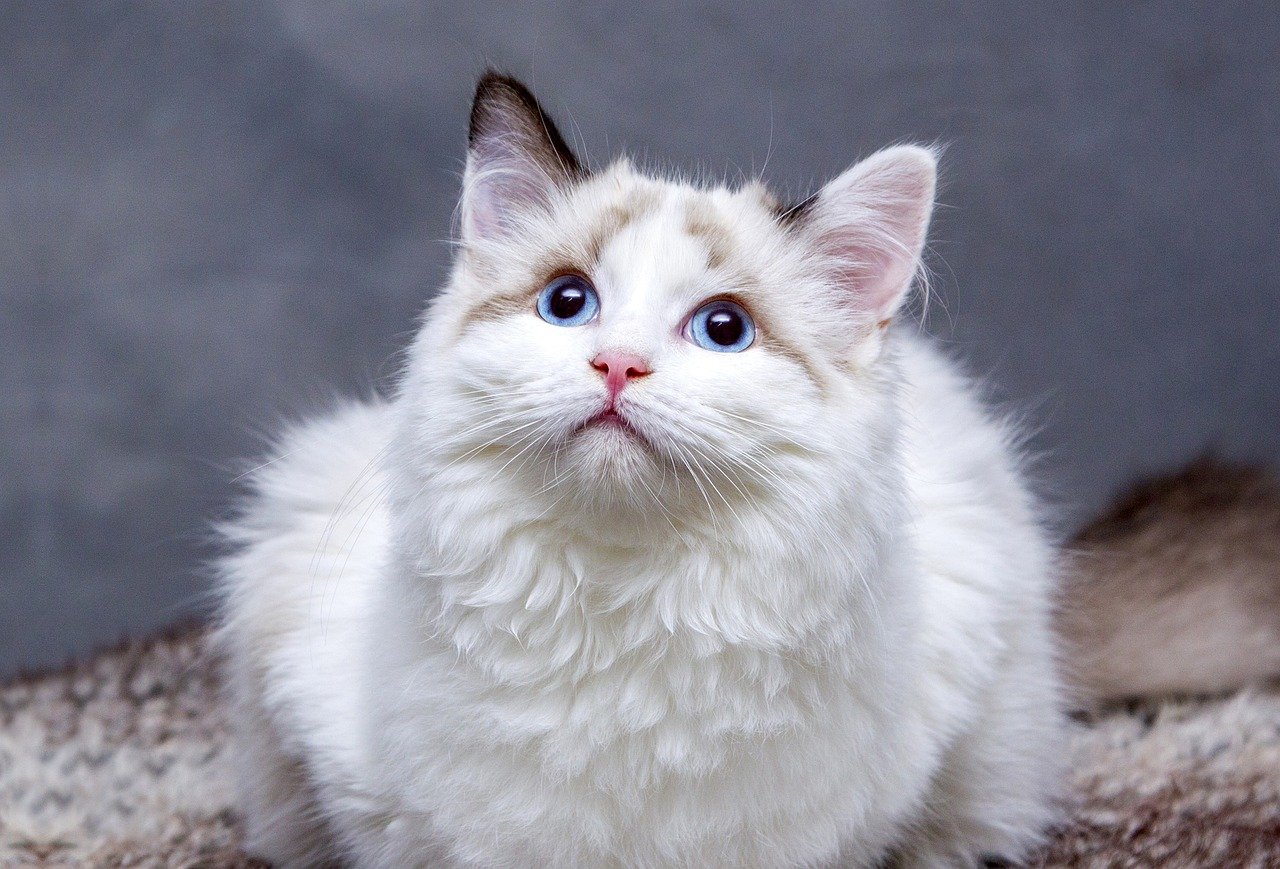
Understanding Senior Pet Needs
As our furry friends age, their needs change significantly, and it’s crucial for pet owners to recognize and adapt to these changes. Senior pets, typically classified as those over the age of 7, often experience a variety of physical and emotional transformations. These transformations can affect their grooming requirements, health, and overall well-being. Just like us, older pets may face challenges such as arthritis, reduced mobility, and sensitive skin, which can make grooming a more delicate process.
One of the most important aspects of understanding senior pet needs is recognizing the signs of aging. For instance, you might notice that your once sprightly dog is now slower to get up or that your cat prefers to lounge more than play. These changes can influence how you approach grooming. For example, a senior pet may not tolerate long grooming sessions as well as they did when they were younger. Therefore, it’s essential to break down grooming tasks into shorter, more manageable sessions. This way, you can keep your pet comfortable while still ensuring they receive the care they need.
Additionally, senior pets may have specific health issues that require special attention during grooming. For instance, pets with arthritis may have difficulty standing for long periods, making it important to provide support and comfort during grooming. Similarly, some older pets may have skin conditions or sensitivities that necessitate the use of specialized grooming products. Always consult your veterinarian if you notice any unusual signs or behaviors during grooming, as early detection of health issues can lead to more effective treatment.
In essence, understanding the unique needs of senior pets allows you to tailor your grooming routine to enhance their comfort and well-being. By being attentive and proactive, you can help ensure that your beloved companion enjoys their golden years to the fullest. Remember, grooming isn’t just about aesthetics; it’s a vital part of maintaining your pet’s health and happiness.
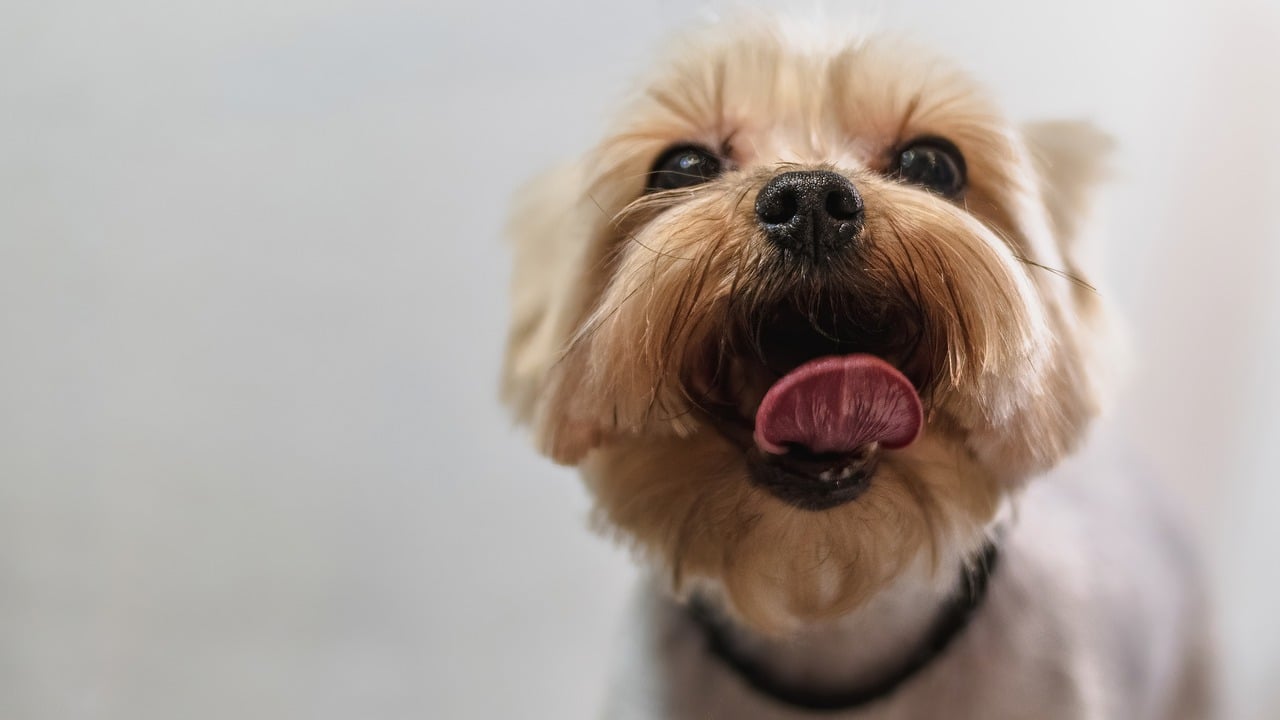
Choosing the Right Tools
When it comes to grooming your senior pet, selecting the right tools is absolutely crucial. Just like you wouldn’t use a hammer to drive in a screw, you need to ensure that the tools you choose are tailored to the unique needs of older animals. Senior pets can have different sensitivities and physical challenges, so the right grooming tools can make all the difference in their comfort and well-being. Imagine trying to brush your hair with a fork—uncomfortable, right? That’s how your pet feels when the wrong tools are used.
First and foremost, consider soft brushes. As pets age, their skin becomes more sensitive, and using harsh bristles can lead to discomfort or even pain. A soft brush not only feels good on their skin but also effectively removes loose fur without causing irritation. It’s like giving your furry friend a gentle massage that they will appreciate. Additionally, look for brushes designed specifically for senior pets, as they often come with features that cater to their unique needs.
Another essential tool in your grooming kit should be deshedding tools. Senior pets can suffer from excessive shedding, which can lead to a messy home and even skin issues if not managed properly. Deshedding tools are designed to remove the undercoat without damaging the top coat, keeping your pet's fur healthy and shiny. It’s akin to raking leaves in the fall—necessary to maintain a clean yard, and it ensures that the grass underneath stays healthy.
When it comes to trimming your pet’s coat, electric clippers can be a game-changer. These devices provide a gentle way to maintain coat length without the stress that traditional scissors might cause. They are quieter and often come with various attachments that allow for different lengths, making them versatile for all types of fur. Just imagine how much easier it is to cut your hair with a good pair of clippers rather than struggling with scissors!
Lastly, don’t forget about nail trimmers. Overgrown nails can lead to pain and mobility issues for senior pets, so investing in a good pair of nail clippers is essential. Look for ones that are specifically designed for pets, as they will have safety features to prevent over-cutting. Consider using a grinder as well; it’s like giving your pet a mini spa day for their paws!
In summary, the right grooming tools are not just about aesthetics; they play a vital role in your senior pet's comfort and health. By choosing the appropriate brushes, clippers, and nail trimmers, you can ensure that grooming becomes a positive experience for your furry friend. Remember, a happy pet is a healthy pet!
- What tools should I use for grooming my senior pet? Soft brushes, deshedding tools, electric clippers, and pet nail trimmers are recommended.
- How often should I groom my senior pet? It depends on the breed and coat type, but regular grooming is essential to keep their coat healthy.
- Can I use human grooming tools on my pet? It's best to use tools specifically designed for pets to ensure their comfort and safety.
Soft Brushes for Sensitive Skin
As our furry companions age, their skin becomes more delicate and sensitive, much like how our skin changes as we grow older. This makes it essential to choose the right grooming tools to ensure their comfort during grooming sessions. Soft brushes are a fantastic choice for senior pets, as they provide a gentle touch while effectively removing loose fur and dirt. Unlike harsher brushes that might irritate their skin, soft brushes glide smoothly over their coats, making the experience pleasant rather than painful.
When selecting a soft brush, consider the following factors: the type of fur your pet has, their skin sensitivity, and any existing skin conditions. For instance, pets with long or thick fur may benefit from a soft pin brush, which can detangle without pulling on their skin. On the other hand, short-haired pets might find a soft bristle brush more comfortable. It's all about finding the right fit for your beloved pet!
Using a soft brush not only helps maintain your senior pet's coat but also strengthens the bond between you and your furry friend. Imagine this: you're sitting on the couch, gently brushing your pet's fur while they lean into you, enjoying the affection. This simple act can be incredibly soothing for both of you, turning grooming into a cherished bonding time.
Moreover, regular brushing can help you monitor your pet's skin condition. As you brush, keep an eye out for any unusual lumps, bumps, or irritations that may require a vet's attention. This proactive approach can make a significant difference in your senior pet's overall health and well-being.
Incorporating soft brushes into your grooming routine can make a world of difference for your senior pet. Remember, the goal is to create a positive experience that leaves them feeling loved and cared for. So, grab that soft brush, find a cozy spot, and enjoy some quality grooming time with your furry friend!
- How often should I brush my senior pet? It's recommended to brush your senior pet at least once a week, but more frequent brushing may be beneficial, especially during shedding seasons.
- Can I use human hair brushes on my pet? It's best to use brushes specifically designed for pets, as human brushes may not be gentle enough and can cause discomfort.
- What if my pet resists grooming? Introduce grooming gradually, using treats and positive reinforcement to help them associate grooming with a pleasant experience.
- Are there any signs that indicate my pet needs a professional groomer? If your pet has matted fur, skin irritations, or if you feel uncomfortable grooming them, it's time to seek professional help.
Deshedding Tools
Managing shedding in senior pets is crucial for both their comfort and the cleanliness of your home. As pets age, they may shed more due to changes in their skin and coat health. This is where come into play, offering a solution that not only helps control the amount of fur you find around your house but also promotes a healthy coat for your furry friend. These tools are specifically designed to reach the undercoat, effectively removing loose fur without damaging the top layer.
When selecting deshedding tools, consider your pet’s coat type. For instance, pets with thick or double coats benefit greatly from de-shedding brushes or rakes, which can penetrate through the layers of fur. On the other hand, pets with shorter coats may only need a rubber grooming mitt that can gently lift away loose hair while providing a soothing massage. Not only does this make the grooming process enjoyable for your pet, but it also enhances blood circulation and skin health.
In addition to brushes and rakes, you might also want to explore deshedding tools like the FURminator, a popular choice among pet owners. This tool features a stainless-steel edge that effectively removes loose hair and undercoat without cutting or damaging the topcoat. Using such tools regularly can significantly reduce shedding and matting, making it easier for your senior pet to stay comfortable and clean.
It’s essential to use these tools correctly to avoid causing discomfort. Always groom in the direction of hair growth and be gentle, especially on sensitive areas like the belly and legs. If your senior pet shows signs of discomfort, take a break and try again later. Remember, grooming should be a positive experience, not a stressful one.
To sum up, deshedding tools are invaluable for managing the unique shedding needs of senior pets. By choosing the right tools and employing gentle techniques, you can help your furry companion maintain a healthy coat and enjoy a more comfortable life.
Here are some common questions pet owners have about grooming senior pets:
- How often should I groom my senior pet? - It depends on the breed and coat type, but generally, more frequent grooming is beneficial for senior pets.
- Can I use human grooming tools on my pet? - It's best to use tools specifically designed for pets, as human tools may not be safe or effective.
- What if my senior pet resists grooming? - Start with short sessions and offer treats to create a positive association with grooming.
- When should I consult a professional groomer? - If your pet has mobility issues or severe matting, seeking professional help is advisable.
Electric Clippers
This article provides essential tips for grooming senior pets, ensuring their comfort and well-being. Learn how to adapt grooming routines to accommodate the unique needs of older animals.
As pets age, their grooming requirements change. Understanding these needs helps owners provide better care and maintain their pets' health and comfort during grooming sessions.
Selecting appropriate grooming tools is crucial for senior pets. The right brushes, clippers, and nail trimmers can make grooming easier and more comfortable for older animals.
Senior pets often have more sensitive skin. Using soft brushes can prevent discomfort and ensure a gentle grooming experience while effectively removing loose fur.
Deshedding tools can help manage excessive shedding in senior pets, keeping their coats healthy and reducing the amount of fur in the home.
When it comes to grooming senior pets, are a game changer. These tools not only simplify the grooming process but also provide a gentle way to maintain their coat length without causing stress or discomfort. Unlike traditional clippers, electric clippers are designed to glide smoothly over the skin, which is especially important for older pets who may have more fragile skin. The last thing you want is to tug or pull at their fur, which can lead to anxiety and fear during grooming sessions.
Moreover, electric clippers come in various blade sizes and types, allowing you to customize the grooming experience based on your pet's specific needs. For instance, using a longer blade can help you achieve a softer cut, while a shorter blade can provide a closer trim. It's essential to choose the right blade to avoid any unnecessary discomfort for your furry friend. Additionally, many electric clippers operate quietly, which is an important feature for senior pets who may be more sensitive to loud noises.
To ensure a smooth grooming experience, consider the following tips when using electric clippers on your senior pet:
- Start with a calm environment to help your pet relax.
- Introduce the clippers gradually, allowing your pet to get used to the sound and feel.
- Always use a clipper designed for pets, as these are specifically made to handle their unique fur and skin types.
- Keep the clippers clean and well-oiled to prevent pulling on the fur.
By incorporating electric clippers into your grooming routine, you can make the process much more enjoyable for both you and your senior pet. Remember, a positive grooming experience can enhance your bond and keep your furry friend looking and feeling their best!
Nail care is vital for senior pets, as overgrown nails can lead to pain and mobility issues. Regular trimming and proper techniques can ensure their comfort.
Bathing is essential for hygiene, but senior pets may require special considerations. Understanding how to bathe them safely and comfortably is key to a positive experience.
Choosing gentle, hypoallergenic shampoos can protect sensitive skin and minimize irritation during baths, making the process more enjoyable for senior pets.
Proper drying techniques are essential for senior pets to prevent chills or skin issues. Using soft towels and low-heat dryers can ensure their comfort after bathing.
Establishing a regular grooming schedule is vital for senior pets. Consistency helps them adapt and reduces anxiety, ensuring they receive the care they need.
Shorter grooming sessions can be less stressful for senior pets. Frequent, brief grooming can help maintain their coat and health without overwhelming them.
Grooming sessions provide an opportunity to monitor your senior pet's health. Look for changes in skin condition or mobility issues that may require veterinary attention.
A comfortable grooming environment can ease anxiety for senior pets. Consider factors such as temperature, noise, and surface to enhance their grooming experience.
Choosing a quiet, calm space for grooming can help reduce stress for senior pets, allowing them to feel secure and relaxed during the process.
Using non-slip surfaces during grooming can prevent slips and falls, ensuring safety and comfort for senior pets who may have mobility challenges.
Sometimes, seeking professional grooming help is necessary for senior pets. Experienced groomers can provide specialized care tailored to the needs of older animals.
Look for groomers who specialize in senior pet care. They will understand the unique needs and challenges associated with grooming older animals.
Consulting a veterinarian is essential if you notice any health issues during grooming. Early detection can lead to better outcomes for senior pets.
Q: How often should I groom my senior pet?
A: It depends on the breed and coat type, but generally, every 4-6 weeks is a good rule of thumb. Regular grooming helps keep their coat healthy and allows you to monitor their skin condition.
Q: Are electric clippers safe for senior pets?
A: Yes, electric clippers can be safe for senior pets when used correctly. Just ensure you choose a quiet model and introduce it gradually to your pet.
Q: What if my senior pet doesn’t like being groomed?
A: Patience is key! Start with short sessions and gradually increase the time as your pet becomes more comfortable. Consider using treats to create a positive association with grooming.
Nail Care Tips
Nail care is a crucial aspect of grooming for senior pets, as overgrown nails can lead to significant discomfort and mobility issues. Just like humans, pets rely on their nails for stability and balance. If those nails get too long, it can cause pain, making it hard for your furry friend to walk or even stand. This is why regular nail trimming is not just a beauty routine; it's a health necessity for your beloved companion.
When it comes to trimming your senior pet's nails, patience is key. Start by getting your pet comfortable with the idea of having their paws handled. You might want to gently massage their paws and let them get used to the sensation before introducing any tools. This can help reduce anxiety and make the process smoother. Also, consider using positive reinforcement—treats and praise can go a long way in making your pet associate nail trimming with a pleasant experience.
One of the most important things to remember is to avoid cutting into the quick, the sensitive part of the nail that contains blood vessels and nerves. For pets with dark nails, this can be tricky since you can't see the quick. A good rule of thumb is to trim just a little at a time, checking frequently to ensure you’re not getting too close. If you’re unsure, it’s always best to consult with a professional groomer or veterinarian.
Additionally, using the right tools can make a world of difference. Look for specialized nail clippers designed for senior pets. These tools often have features that provide better grip and control, making it easier to trim nails without causing stress. Another option is a nail grinder, which can gently file down the nail instead of cutting it. This can be particularly beneficial for pets who are sensitive to clippers.
Here are some quick tips for nail care:
- Trim nails regularly, ideally every 4-6 weeks.
- Use soft treats to reward your pet after each successful trimming session.
- Consider using a nail grinder for a less stressful experience.
- Keep a first aid kit handy in case of accidental cuts.
By maintaining a regular nail care routine, you can help your senior pet stay comfortable and mobile. Remember, a little bit of effort goes a long way in ensuring their quality of life remains high. If you notice any signs of discomfort or if your pet seems unusually resistant to nail trimming, it may be time to consult your veterinarian. They can provide guidance tailored to your pet's specific needs and health conditions.
Q: How often should I trim my senior pet's nails?
A: Ideally, you should trim your senior pet's nails every 4-6 weeks. However, this can vary based on their activity level and the surfaces they walk on.
Q: What if my pet is afraid of nail trimming?
A: Start by desensitizing your pet to having their paws handled. Use treats and praise to create a positive association with the process. If they remain fearful, consider consulting a professional groomer.
Q: Can I use regular human nail clippers on my pet?
A: While you can use them in a pinch, it's best to use clippers specifically designed for pets. They provide better control and are safer for your pet's nails.
Q: What should I do if I accidentally cut the quick?
A: If you cut the quick, apply a styptic powder or cornstarch to stop the bleeding. If the bleeding doesn’t stop within a few minutes, consult your veterinarian.

Bathing Senior Pets
Bathing your senior pet is an important aspect of their hygiene routine, but it comes with its own set of challenges. As pets age, their skin becomes more sensitive, and they may have mobility issues that make traditional bathing methods uncomfortable or even unsafe. Therefore, it's crucial to approach the bathing process with care and consideration. Understanding how to bathe them safely and comfortably is key to a positive experience, not just for your furry friend, but for you as well.
When it comes to bathing senior pets, gentleness is the name of the game. Start by ensuring that the bathing area is warm and inviting. A cold bathroom can be a shock to an older pet, especially those with thinner fur or health issues. You can use a non-slip mat in the tub or shower to prevent any slips, which can be particularly dangerous for pets that may have trouble standing. Safety first! Make sure you have everything you need within reach before you start, so you don’t have to leave your pet unattended.
Choosing the right products is just as important as the bathing process itself. Opt for gentle, hypoallergenic shampoos that cater to sensitive skin. These shampoos are designed to minimize irritation and are less likely to cause allergic reactions. Always do a patch test on a small area of your pet’s skin before applying the shampoo all over. You can also consider using a conditioner designed for senior pets to help keep their coat soft and manageable.
After lathering up, rinsing thoroughly is essential. Any leftover shampoo can irritate their skin, so take your time to ensure that all the soap is washed away. A gentle spray nozzle can make this process easier and more comfortable for your pet. Once the bathing is done, drying them off properly is crucial. Use soft towels to gently pat them dry; avoid vigorous rubbing, as this can cause discomfort. If you choose to use a hairdryer, set it to a low heat and keep it at a safe distance to prevent overheating their sensitive skin.
Here’s a quick summary of bathing techniques for senior pets:
| Step | Tips |
|---|---|
| Preparation | Ensure the bathing area is warm and safe; have all supplies ready. |
| Shampoo | Use gentle, hypoallergenic products to avoid skin irritation. |
| Rinsing | Make sure to rinse thoroughly to remove all shampoo residue. |
| Drying | Gently pat dry with soft towels; use a low-heat dryer if necessary. |
Bathing can be a bonding experience if approached with care. While it may seem like a chore, taking the time to do it right can help keep your senior pet comfortable and clean. Remember, every pet is different; some may enjoy the water, while others might prefer to stay dry. Pay attention to their cues and adjust your approach accordingly. With a little patience and the right techniques, bathing can be a pleasant experience for both of you!
- How often should I bathe my senior pet? - Generally, bathing every 4-6 weeks is sufficient, but it can vary based on your pet's activity level and health.
- What if my senior pet hates baths? - Try to make the process more enjoyable with treats and praise. You can also consider sponge baths if they resist traditional bathing.
- Are there any signs that I should consult a vet before bathing? - Yes, if your pet has open wounds, skin infections, or any other health concerns, consult your veterinarian first.
Using Gentle Shampoos
When it comes to bathing your senior pet, choosing the right shampoo is crucial. As our furry friends age, their skin can become increasingly sensitive, making it essential to use gentle, hypoallergenic shampoos that cater to their unique needs. These specially formulated shampoos not only help in cleansing their coat but also protect their delicate skin from irritation and dryness.
One of the key benefits of using gentle shampoos is that they often contain natural ingredients that soothe and nourish the skin. Look for products that include oatmeal, aloe vera, or chamomile, as these ingredients can provide relief from itching and inflammation. It's like treating your pet to a spa day right in the comfort of your home!
But how do you know if a shampoo is truly gentle? Here are some important factors to consider:
- Check the Ingredients: Always read the label. Avoid shampoos with harsh chemicals, artificial fragrances, or dyes that could cause discomfort.
- pH Balanced: Ensure the shampoo is pH balanced specifically for pets, as their skin has different needs compared to humans.
- Test for Allergies: If you're trying a new product, do a patch test by applying a small amount to a less sensitive area of your pet's skin before full use.
Additionally, consider the frequency of baths. Senior pets may not require frequent bathing as they might have lower activity levels. Bathing them too often can strip their skin of natural oils, leading to dryness and irritation. Instead, aim for a bathing schedule that keeps them clean without overdoing it. Generally, a bath every 4 to 6 weeks should suffice, but always consult your veterinarian for personalized advice based on your pet's specific needs.
In conclusion, using gentle shampoos is a vital aspect of grooming senior pets. By prioritizing their comfort and skin health, you can turn bath time into a positive experience rather than a stressful chore. Remember, your senior pet deserves all the love and care you can give, especially during their golden years!
Q: How often should I bathe my senior pet?
A: It’s generally recommended to bathe senior pets every 4 to 6 weeks, but this can vary based on their activity level and coat type. Always consult your veterinarian for tailored advice.
Q: Can I use human shampoo on my pet?
A: No, human shampoos can be too harsh for pets. Always use shampoos specifically formulated for animals to avoid skin irritation.
Q: What should I do if my pet has dry skin?
A: If your senior pet has dry skin, consider using a moisturizing shampoo and consult your veterinarian for additional treatments or dietary changes that may help.
Q: Are there any natural alternatives to commercial shampoos?
A: Yes, you can use natural ingredients like oatmeal or coconut oil mixed with water as a gentle cleanser. However, always check with your vet before trying new products.
Drying Techniques
When it comes to drying your senior pet after a bath, it's not just about getting them dry; it's about ensuring their comfort and safety. Senior pets can be more susceptible to chills and skin issues, so adopting the right drying techniques is crucial. First and foremost, always use soft towels to gently pat your pet dry. This method not only absorbs moisture effectively but also provides a soothing touch that can help ease any anxiety your furry friend may feel.
After towel drying, consider the use of a low-heat pet dryer. It's essential to choose a dryer that has adjustable heat settings, as senior pets may have sensitive skin. Always start on the lowest heat setting and keep the dryer at a safe distance from your pet's body to prevent burns or discomfort. Move the dryer in a sweeping motion, allowing the air to circulate evenly across their coat. This technique not only helps in drying but also prevents hot spots that can lead to skin irritation.
Additionally, it's a good idea to create a warm environment during the drying process. If possible, use a space heater or ensure the room is at a comfortable temperature. Avoid drafts, as these can make your senior pet feel cold and uneasy. Remember, the goal is to make the drying process as pleasant as possible, so take your time and keep an eye on your pet's reactions. If they seem uncomfortable at any point, pause and give them a break.
In summary, the drying process for senior pets should be gentle and attentive. By using soft towels, low-heat dryers, and maintaining a warm environment, you can ensure that your beloved companion feels relaxed and cared for after their bath. These small adjustments can make a significant difference in their overall grooming experience.
- How often should I bathe my senior pet?
Bathing frequency depends on your pet's breed, coat type, and lifestyle. Generally, once every 4-6 weeks is sufficient, but always consult your veterinarian for personalized advice.
- What if my senior pet is afraid of the dryer?
If your pet is uncomfortable with the dryer, stick to towel drying and allow them to air dry in a warm, quiet space. Gradually introduce the dryer while providing treats to create positive associations.
- Can I use human shampoo on my senior pet?
No, it's best to use shampoos specifically formulated for pets. Human shampoos can disrupt the natural pH balance of your pet's skin and lead to irritation.
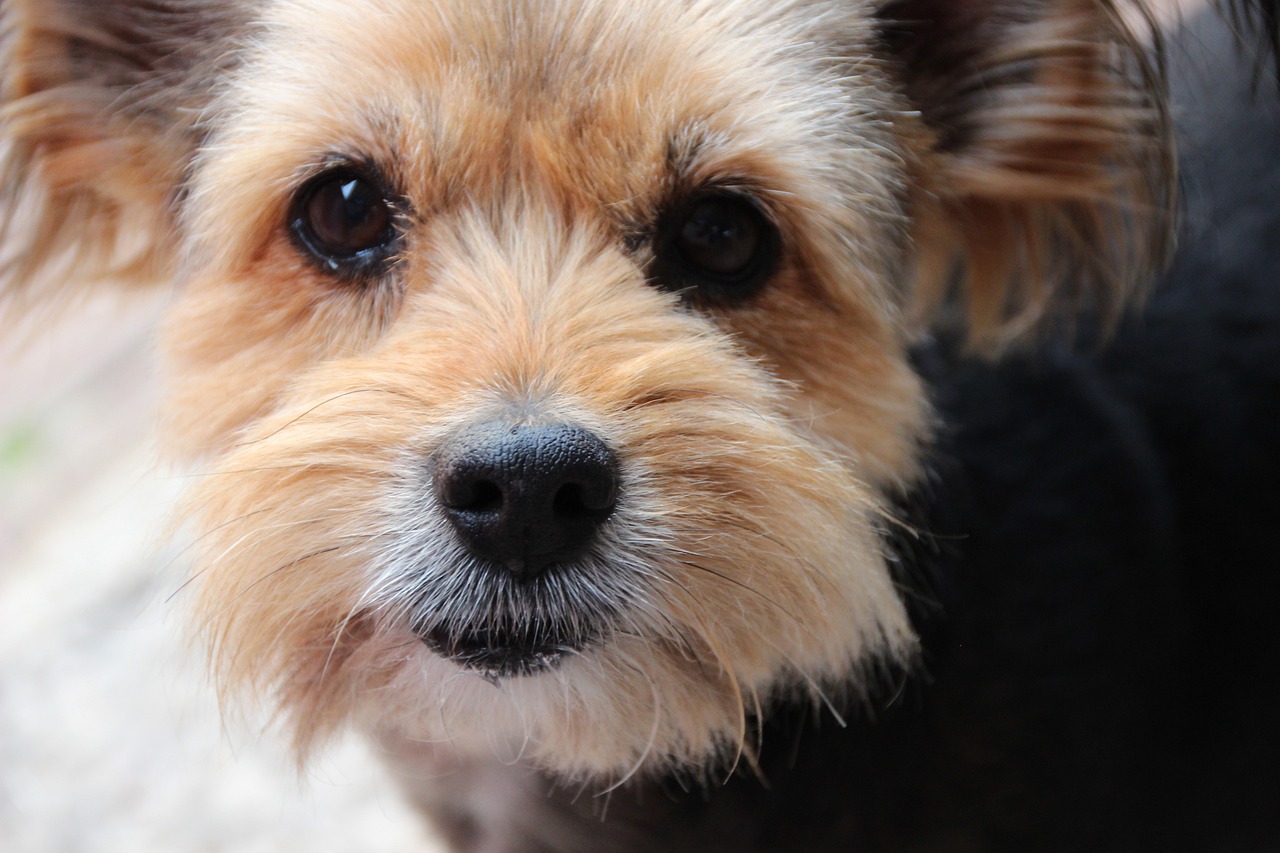
Regular Grooming Schedule
Establishing a is vital for the well-being of senior pets. Just like us, our furry friends thrive on routine, and consistency can make a world of difference in their comfort and health. Imagine your pet’s delight when they know it’s grooming day! It’s not just about keeping them looking great; it’s also an opportunity to bond with them and monitor their health. Regular grooming can help identify any potential issues early on, such as skin irritations or lumps that could require veterinary attention.
When it comes to grooming senior pets, shorter, more frequent sessions are often the way to go. Long sessions can be overwhelming for older animals, who might not have the same energy or patience as they once did. Instead, aim for brief sessions that last about 10-15 minutes. This way, your pet won’t feel stressed out, and you can still maintain their coat and health. You can easily break these sessions into manageable parts, focusing on different areas of the body each time. For example, one day you could concentrate on brushing their back and sides, while another day could be dedicated to their paws and tail.
Additionally, it’s important to monitor your senior pet’s health during these grooming sessions. As you brush and clean, take a moment to check for any changes in their skin condition, mobility, or overall demeanor. If you notice anything unusual, such as lumps or signs of discomfort, don’t hesitate to consult your veterinarian. Regular grooming not only keeps your pet looking fabulous but also serves as a vital tool in ensuring they remain healthy and happy.
To help you establish a routine, consider using the following table as a guide for your senior pet's grooming schedule:
| Grooming Task | Frequency | Duration |
|---|---|---|
| Brushing | 2-3 times a week | 10-15 minutes |
| Nail Trimming | Every 3-4 weeks | 5-10 minutes |
| Bathing | Once a month (or as needed) | 20-30 minutes |
| Ear Cleaning | Every 2 weeks | 5 minutes |
By following a structured grooming schedule, you’ll not only keep your senior pet looking their best but also ensure they feel comfortable and cared for. Remember, the goal is to make grooming a positive experience, so be patient and shower them with love and praise throughout the process!
- How often should I groom my senior pet? - Aim for 2-3 times a week for brushing, with shorter sessions to keep them comfortable.
- What if my senior pet resists grooming? - Take it slow! Gradually introduce grooming tools and make it a positive experience with treats and praise.
- When should I consult a veterinarian during grooming? - If you notice any lumps, skin irritations, or signs of discomfort, it's best to seek veterinary advice.
Shorter, More Frequent Sessions
When it comes to grooming senior pets, the mantra should be "less is more." Shorter, more frequent grooming sessions can be a game changer for older animals. Imagine trying to get through a marathon when all you really need is a nice, leisurely stroll. That's how senior pets often feel about grooming. They may not have the stamina or patience for long grooming sessions, which can lead to stress and anxiety. By breaking up the grooming process into shorter intervals, you can create a more comfortable and enjoyable experience for your furry friend.
Think of it this way: just like us, senior pets can become overwhelmed. A 15-minute grooming session every few days is often more beneficial than a single hour-long session once a week. This approach allows you to focus on specific areas, such as brushing their coat one day and trimming their nails another. It also gives you the opportunity to monitor their health closely. During these brief sessions, you can check for any unusual lumps, bumps, or changes in their skin condition that may need veterinary attention.
Additionally, frequent grooming helps to maintain their coat and skin health. It removes loose fur and prevents matting, which can be particularly uncomfortable for pets with sensitive skin. You might even find that your senior pet starts to look forward to these little pampering sessions, as they become a part of their routine. The key is to make each session positive and rewarding. Consider offering treats or praise after each session to create a happy association with grooming.
To help you structure these shorter sessions, here’s a simple table outlining a potential grooming schedule:
| Day | Grooming Activity | Duration |
|---|---|---|
| Monday | Brushing | 10-15 minutes |
| Wednesday | Nail Trimming | 5-10 minutes |
| Friday | Ear Cleaning | 5-10 minutes |
| Sunday | Bathing (if necessary) | 15-20 minutes |
Incorporating this kind of schedule not only helps to keep your senior pet looking and feeling their best but also reduces the stress associated with grooming. Remember, the goal is to keep things light and easy. Adapt the sessions based on your pet's comfort level, and don’t hesitate to adjust the activities as needed. With a little patience and understanding, you can make grooming a positive experience that enhances the bond you share with your beloved senior pet.
- How often should I groom my senior pet? It depends on the breed and coat type, but generally, shorter sessions several times a week are recommended.
- What if my senior pet resists grooming? Try to make the experience more enjoyable with treats and praise. Start slowly and gradually increase the time spent grooming.
- Are there specific tools for senior pets? Yes, soft brushes and electric clippers are ideal for their sensitive skin.
- When should I consult a vet during grooming? If you notice any unusual lumps, skin irritations, or mobility issues, it's best to consult your veterinarian.
Monitoring Health During Grooming
Grooming isn't just about keeping your senior pet looking fabulous; it's also a golden opportunity to monitor their overall health. As our furry friends age, they may face various health challenges that can go unnoticed without regular check-ups. During grooming sessions, take a moment to observe your pet closely. Are they reacting differently when you touch certain areas? Are there any lumps or bumps that weren't there before? These subtle signs could indicate underlying health issues that require attention.
While grooming, keep an eye out for the following indicators of health:
- Skin Condition: Look for any unusual redness, dryness, or flakiness. Changes in the skin can signal allergies, infections, or other health problems.
- Weight Changes: As you groom your pet, you might notice if they have lost or gained weight. Significant changes can be a sign of metabolic issues or other health concerns.
- Mobility Issues: Pay attention to how easily your pet moves during grooming. If they seem stiff or hesitant, it could indicate arthritis or other joint problems.
- Behavioral Changes: Notice if your pet seems more anxious or irritable than usual. Behavioral shifts can often be a reflection of pain or discomfort.
Additionally, grooming time is perfect for checking their ears, eyes, and teeth. Gently examine their ears for any signs of wax buildup or odor, which could indicate an infection. Look into their eyes for cloudiness or redness, and assess their teeth and gums for any signs of dental disease. Early detection is key, and your grooming routine can act as a vital health check.
If you notice anything concerning during your grooming sessions, don't hesitate to consult your veterinarian. They can provide insights and recommend treatments for any issues you might find. Remember, your senior pet relies on you to keep them healthy and happy, and grooming is a fantastic way to bond while ensuring their well-being.
1. How often should I groom my senior pet?
Grooming frequency depends on the breed and coat type. Generally, aim for at least once a week, but some may require more frequent grooming.
2. What signs should I look for during grooming?
Watch for changes in skin condition, weight, mobility, and behavior. Any abnormalities should be discussed with a veterinarian.
3. Can I groom my senior pet at home?
Yes, many pet owners successfully groom their senior pets at home. Just ensure you use the right tools and techniques to keep them comfortable.
4. When should I seek professional grooming help?
If your pet has specific health issues or anxiety about grooming, a professional groomer experienced with senior pets can provide specialized care.
5. What should I do if my pet is uncomfortable during grooming?
If your pet shows signs of discomfort, take a break, and provide reassurance. You can also consult a veterinarian for advice on how to make grooming more comfortable.
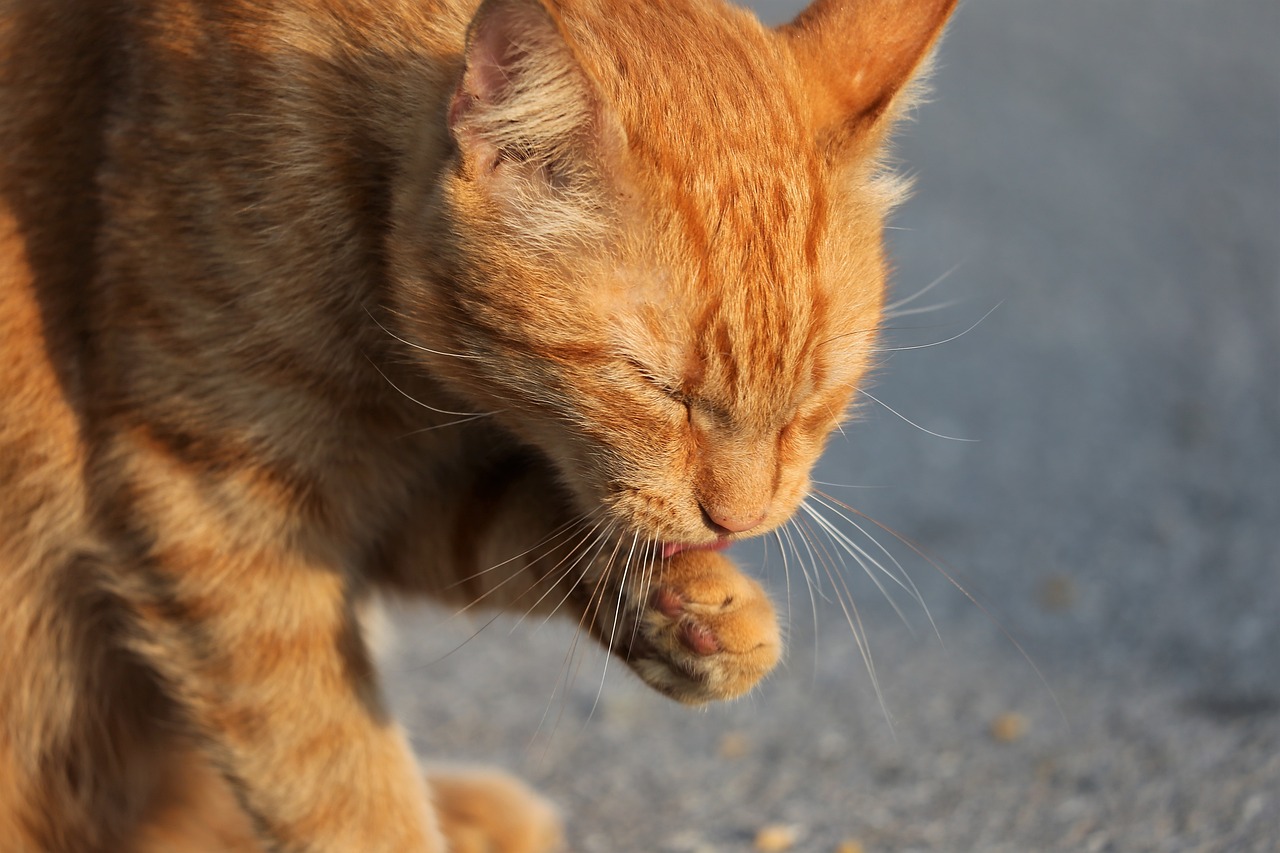
Creating a Comfortable Environment
Creating a comfortable grooming environment for your senior pet is crucial to ensuring that the experience is as stress-free as possible. Just like humans, pets can feel anxious or uncomfortable in unfamiliar or loud surroundings. Imagine trying to relax in a noisy, chaotic room; it’s not easy, right? For senior pets, who may already be dealing with health issues, this can be even more challenging. Therefore, it’s important to consider various factors that contribute to a calming atmosphere.
First and foremost, temperature control plays a significant role in your pet's comfort. Older animals may have difficulty regulating their body temperature, so it's essential to groom them in a space that is neither too hot nor too cold. A comfortable room temperature can help keep your pet relaxed and focused, making the grooming process smoother for both of you. You might even consider using a fan or heater to adjust the environment as needed.
Next, think about the noise level. Loud sounds can easily startle senior pets, causing them to become anxious or agitated. Try to choose a quiet space for grooming where you won't be interrupted by loud appliances or other pets. If your home tends to be noisy, consider playing soft music or using white noise to drown out sudden sounds. This can create a more serene environment that helps your furry friend feel at ease.
Another important aspect is the surface on which you groom your pet. A non-slip surface is vital to prevent any slips or falls, especially for senior pets who may already have mobility challenges. You can use a grooming table with a non-slip mat or lay down a soft blanket on the floor to provide a secure and comfortable space. This not only enhances safety but also gives your pet a familiar spot to relax during grooming sessions.
Additionally, consider the lighting in your grooming area. Bright, harsh lights can be overwhelming for senior pets, so opt for softer, natural lighting whenever possible. If you're grooming indoors, try to position your pet near a window where they can benefit from natural light, or use lamps with dimmable features to create a warm, inviting atmosphere.
Finally, don’t underestimate the power of positive reinforcement. Having treats or favorite toys nearby can help create a more enjoyable experience for your pet. Rewarding them with praise or a small treat during and after grooming can transform the session from a chore into a bonding experience. Remember, the goal is to make grooming a positive and comfortable routine that your senior pet looks forward to rather than dreads.
- What should I do if my senior pet is anxious during grooming?
Try to create a calm environment, use gentle touches, and consider short, frequent grooming sessions to help them adjust. - How can I tell if my pet is comfortable during grooming?
Look for relaxed body language, such as a wagging tail or soft eyes. If they seem tense or try to escape, it may be time to take a break. - Is it necessary to groom my senior pet regularly?
Yes! Regular grooming helps maintain their coat and skin health, and it also provides an opportunity to check for any health issues.
Quiet Spaces
Creating a peaceful environment for grooming your senior pet is crucial for their comfort and overall well-being. Just like humans, pets can feel anxious in noisy or chaotic settings, which can make grooming sessions feel like a daunting task. Imagine trying to relax in a bustling café while someone is playing loud music; it’s hard to focus, right? Similarly, your furry friend deserves a calm and quiet space where they can feel secure and relaxed.
When selecting a spot for grooming, consider these factors:
- Location: Choose a quiet room away from the hustle and bustle of daily life. A bedroom or a designated pet grooming area can be ideal.
- Sound Levels: Ensure the area is free from loud appliances, television sounds, or other pets that might create distractions.
- Lighting: Soft, natural light can create a soothing atmosphere, helping your pet feel more at ease.
Additionally, make sure the space is familiar to your pet. If they associate that area with positive experiences, like cuddles or treats, they will likely feel more comfortable during grooming. You can enhance the environment by laying down a soft blanket or mat where they can sit comfortably, which can also help them feel secure. Remember, the goal is to transform grooming from a stressful chore into a bonding experience that both you and your pet can enjoy.
Moreover, consider the temperature of the room. Senior pets can be more sensitive to heat and cold, so maintaining a comfortable temperature is essential. If it's too warm, they might become agitated, and if it's too cold, they could become anxious. A cozy, well-regulated environment will help keep their stress levels low.
Non-Slip Surfaces
This article provides essential tips for grooming senior pets, ensuring their comfort and well-being. Learn how to adapt grooming routines to accommodate the unique needs of older animals.
As pets age, their grooming requirements change. Understanding these needs helps owners provide better care and maintain their pets' health and comfort during grooming sessions.
Selecting appropriate grooming tools is crucial for senior pets. The right brushes, clippers, and nail trimmers can make grooming easier and more comfortable for older animals.
Senior pets often have more sensitive skin. Using soft brushes can prevent discomfort and ensure a gentle grooming experience while effectively removing loose fur.
Deshedding tools can help manage excessive shedding in senior pets, keeping their coats healthy and reducing the amount of fur in the home.
Electric clippers can simplify the grooming process for senior pets, providing a gentle way to maintain their coat length without causing stress or discomfort.
Nail care is vital for senior pets, as overgrown nails can lead to pain and mobility issues. Regular trimming and proper techniques can ensure their comfort.
Bathing is essential for hygiene, but senior pets may require special considerations. Understanding how to bathe them safely and comfortably is key to a positive experience.
Choosing gentle, hypoallergenic shampoos can protect sensitive skin and minimize irritation during baths, making the process more enjoyable for senior pets.
Proper drying techniques are essential for senior pets to prevent chills or skin issues. Using soft towels and low-heat dryers can ensure their comfort after bathing.
Establishing a regular grooming schedule is vital for senior pets. Consistency helps them adapt and reduces anxiety, ensuring they receive the care they need.
Shorter grooming sessions can be less stressful for senior pets. Frequent, brief grooming can help maintain their coat and health without overwhelming them.
Grooming sessions provide an opportunity to monitor your senior pet's health. Look for changes in skin condition or mobility issues that may require veterinary attention.
A comfortable grooming environment can ease anxiety for senior pets. Consider factors such as temperature, noise, and surface to enhance their grooming experience.
Choosing a quiet, calm space for grooming can help reduce stress for senior pets, allowing them to feel secure and relaxed during the process.
When grooming senior pets, one of the most critical factors to consider is the surface on which they are groomed. play a significant role in ensuring the safety and comfort of older animals, who may struggle with balance and mobility. Imagine trying to walk on a slippery floor—it's not only uncomfortable but can also lead to falls and injuries. Similarly, senior pets require surfaces that provide traction and stability.
There are various options available for creating a non-slip environment:
- Rubber Mats: These provide excellent grip and cushioning, making them ideal for grooming areas.
- Carpet Squares: Soft carpets can help prevent slips while also offering comfort during grooming sessions.
- Specialized Grooming Tables: Some grooming tables come equipped with non-slip surfaces specifically designed for pets.
By ensuring that the grooming area has non-slip surfaces, you not only enhance your pet's comfort but also reduce their anxiety. A secure environment allows them to relax, making the grooming process smoother and more enjoyable for both of you. Remember, the goal is to create an atmosphere where your pet feels safe and cared for, transforming grooming from a chore into a bonding experience.
Sometimes, seeking professional grooming help is necessary for senior pets. Experienced groomers can provide specialized care tailored to the needs of older animals.
Look for groomers who specialize in senior pet care. They will understand the unique needs and challenges associated with grooming older animals.
Consulting a veterinarian is essential if you notice any health issues during grooming. Early detection can lead to better outcomes for senior pets.
Q: How often should I groom my senior pet?
A: It depends on the breed and coat type, but generally, senior pets benefit from more frequent, shorter grooming sessions to keep them comfortable.
Q: What if my senior pet resists grooming?
A: Take it slow and use treats to create positive associations. If they continue to resist, consider consulting a professional groomer.
Q: Are there specific grooming products for senior pets?
A: Yes, look for hypoallergenic shampoos and gentle brushes designed for sensitive skin.
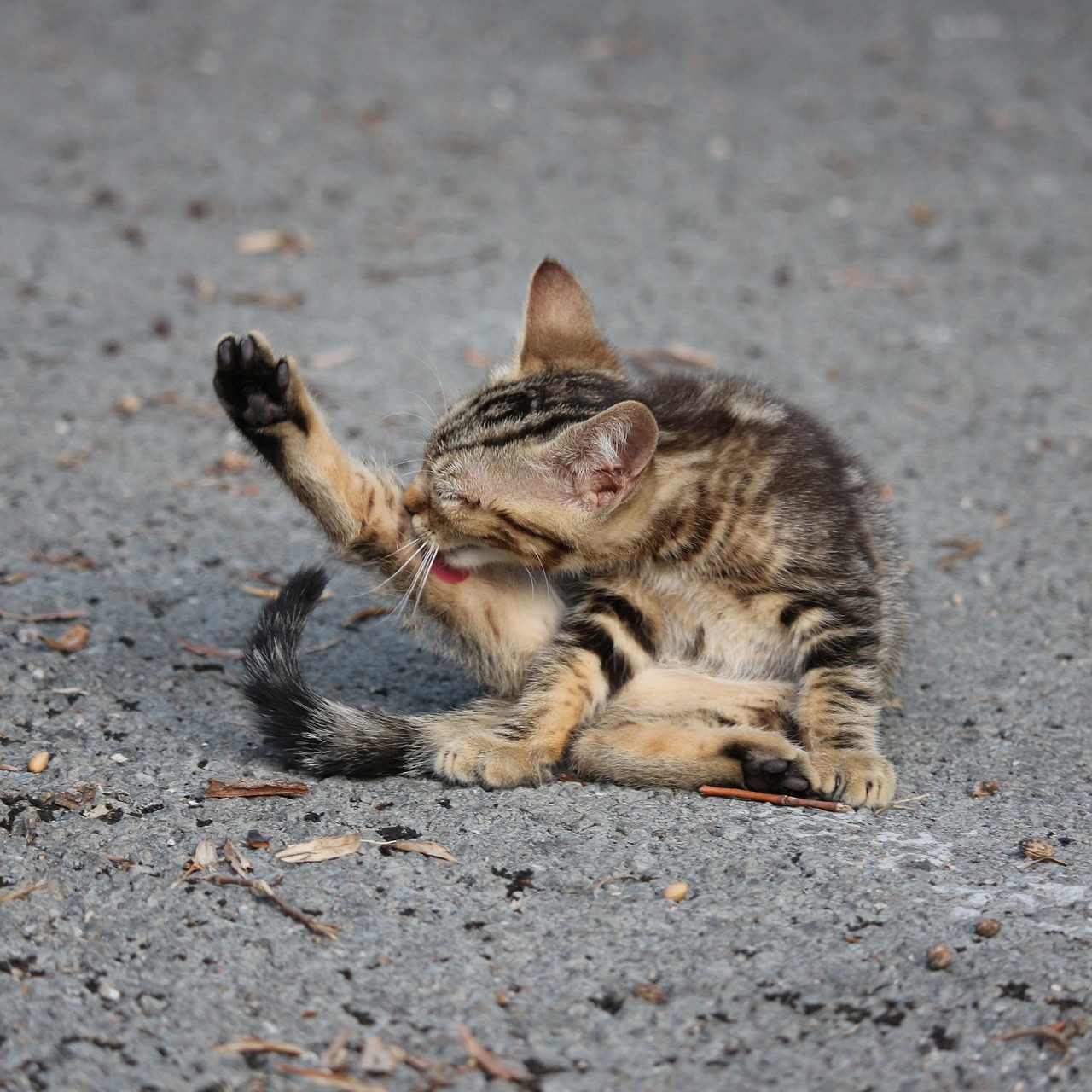
Seeking Professional Help
When it comes to grooming your senior pet, there may come a time when you realize that a little extra help is needed. Just like we sometimes need a professional touch for our hair or nails, our furry friends can benefit from the expertise of a trained groomer. Seeking professional help can ensure that your pet receives the specialized care they deserve, especially as they age and their needs evolve.
Professional groomers who specialize in senior pets are equipped with the knowledge and experience to handle the unique challenges that come with grooming older animals. They understand that senior pets may have more sensitive skin, mobility issues, or even health concerns that require gentle handling. Here’s why you might consider reaching out to a professional:
- Expertise in Handling: Professional groomers know how to work with senior pets in a way that minimizes stress and discomfort. They are trained to recognize signs of anxiety and can adapt their techniques accordingly.
- Specialized Tools: Groomers often have access to tools designed specifically for older pets, making the grooming process smoother and more efficient.
- Health Monitoring: During grooming, professionals are trained to spot potential health issues that you might not notice at home. This early detection can be crucial for your pet’s well-being.
Finding a groomer who specializes in senior pet care can make all the difference. Look for establishments that advertise their experience with older animals or ask your veterinarian for recommendations. A good groomer will take the time to discuss your pet’s specific needs and will be patient and gentle throughout the grooming process.
However, it’s important to remember that while professional grooming is beneficial, it should not replace regular home grooming. You should still maintain a routine at home to keep your pet comfortable and to bond with them. Think of professional grooming as a supplement to your regular care, providing a thorough clean-up and a pampering session that can rejuvenate your pet.
Finally, if you notice any health issues during grooming—such as lumps, skin irritations, or changes in behavior—don’t hesitate to consult your veterinarian. They can provide further insights and recommendations tailored to your senior pet’s needs. After all, keeping our furry companions healthy and happy is what it’s all about!
Here are some common questions pet owners have regarding grooming senior pets:
- How often should I groom my senior pet? It depends on the breed and coat type, but generally, a regular grooming schedule of once a week is beneficial.
- Can I bathe my senior pet as often as a younger pet? While bathing is important, senior pets may not need as frequent baths. Consult your vet for personalized advice.
- What signs indicate my pet is stressed during grooming? Signs include excessive panting, trying to escape, or growling. If you notice these, it may be time to slow down or seek professional help.
Finding a Senior Pet Specialist
This article provides essential tips for grooming senior pets, ensuring their comfort and well-being. Learn how to adapt grooming routines to accommodate the unique needs of older animals.
As pets age, their grooming requirements change. Understanding these needs helps owners provide better care and maintain their pets' health and comfort during grooming sessions.
Selecting appropriate grooming tools is crucial for senior pets. The right brushes, clippers, and nail trimmers can make grooming easier and more comfortable for older animals.
Senior pets often have more sensitive skin. Using soft brushes can prevent discomfort and ensure a gentle grooming experience while effectively removing loose fur.
Deshedding tools can help manage excessive shedding in senior pets, keeping their coats healthy and reducing the amount of fur in the home.
Electric clippers can simplify the grooming process for senior pets, providing a gentle way to maintain their coat length without causing stress or discomfort.
Nail care is vital for senior pets, as overgrown nails can lead to pain and mobility issues. Regular trimming and proper techniques can ensure their comfort.
Bathing is essential for hygiene, but senior pets may require special considerations. Understanding how to bathe them safely and comfortably is key to a positive experience.
Choosing gentle, hypoallergenic shampoos can protect sensitive skin and minimize irritation during baths, making the process more enjoyable for senior pets.
Proper drying techniques are essential for senior pets to prevent chills or skin issues. Using soft towels and low-heat dryers can ensure their comfort after bathing.
Establishing a regular grooming schedule is vital for senior pets. Consistency helps them adapt and reduces anxiety, ensuring they receive the care they need.
Shorter grooming sessions can be less stressful for senior pets. Frequent, brief grooming can help maintain their coat and health without overwhelming them.
Grooming sessions provide an opportunity to monitor your senior pet's health. Look for changes in skin condition or mobility issues that may require veterinary attention.
A comfortable grooming environment can ease anxiety for senior pets. Consider factors such as temperature, noise, and surface to enhance their grooming experience.
Choosing a quiet, calm space for grooming can help reduce stress for senior pets, allowing them to feel secure and relaxed during the process.
Using non-slip surfaces during grooming can prevent slips and falls, ensuring safety and comfort for senior pets who may have mobility challenges.
Sometimes, seeking professional grooming help is necessary for senior pets. Experienced groomers can provide specialized care tailored to the needs of older animals.
When it comes to grooming your senior pet, finding a specialist who understands their unique needs is essential. Not all groomers are equipped to handle the specific challenges that older animals face. Look for professionals who have experience with senior pets, as they will be more familiar with the necessary adjustments in grooming techniques, tools, and handling methods.
Here are some tips to help you find the right senior pet specialist:
- Research: Start by searching online for groomers in your area that specifically mention experience with senior pets. Websites and reviews can provide insight into their expertise.
- Ask Questions: Don't hesitate to call and ask potential groomers about their experience with senior animals. Inquire about their techniques and how they accommodate pets with mobility issues or health concerns.
- Visit the Facility: If possible, visit the grooming facility to observe the environment. A calm, clean, and well-organized space is a good sign that your pet will be comfortable.
Finding the right groomer can make a world of difference in your senior pet's grooming experience. With the right care, your furry friend can enjoy a stress-free grooming session that keeps them looking and feeling great!
Consulting a veterinarian is essential if you notice any health issues during grooming. Early detection can lead to better outcomes for senior pets.
Q: How often should I groom my senior pet?
A: It depends on the breed and coat type. Generally, senior pets may benefit from more frequent, shorter grooming sessions to keep them comfortable.
Q: What should I do if my senior pet is anxious during grooming?
A: Create a calm environment, use gentle techniques, and consider seeking the help of a professional groomer who specializes in senior pets.
Q: Are there any specific health concerns I should watch for during grooming?
A: Yes, keep an eye out for skin irritations, lumps, or changes in mobility. If you notice anything unusual, consult your veterinarian.
When to Consult a Veterinarian
As a loving pet owner, it's crucial to stay vigilant about your senior pet's health, especially during grooming sessions. While grooming is a great opportunity to bond with your furry friend, it also serves as a prime time to observe any changes that might indicate underlying health issues. If you notice any of the following signs, it’s time to consult a veterinarian:
- Changes in Skin Condition: Look for any unusual lumps, bumps, or sores that weren't there before. These could be signs of skin infections or tumors.
- Mobility Issues: If your pet seems stiff, has difficulty standing, or shows signs of pain when being groomed, it may indicate arthritis or other joint problems.
- Excessive Shedding or Bald Spots: While shedding is normal, if you notice an increase or bald patches, it could point to allergies or skin diseases.
- Behavioral Changes: If your pet becomes unusually aggressive or fearful during grooming, it could be a sign of pain or discomfort that needs professional evaluation.
- Unpleasant Odors: A foul smell, especially around the ears or mouth, may indicate infections that require medical attention.
Regular vet check-ups are essential for senior pets, but being proactive during grooming can help catch potential issues early. If you feel uncertain about any changes you observe, don’t hesitate to reach out to your veterinarian. They can provide guidance, recommend treatments, or suggest adjustments to your grooming routine that will cater to your pet's specific needs.
Remember, your senior pet relies on you to advocate for their health. By being observant and responsive, you can help ensure they enjoy their golden years with comfort and joy. After all, a happy pet means a happy owner!
- How often should I groom my senior pet? Senior pets generally benefit from more frequent grooming sessions, ideally every few weeks, to keep their coats healthy and manage shedding.
- What signs indicate my pet needs to see a vet? Look for changes in behavior, mobility, skin condition, and overall health. If in doubt, consult your vet.
- Can I groom my senior pet at home? Yes, many owners successfully groom their pets at home. However, be prepared to adjust your techniques to accommodate their specific needs.
- What are the best tools for grooming senior pets? Soft brushes, electric clippers, and gentle nail trimmers are ideal for senior pets to ensure comfort during grooming.
Frequently Asked Questions
- What are the signs that my senior pet needs grooming?
As your pet ages, you might notice that their coat looks dull, matted, or has an unusual odor. Additionally, if they are scratching more than usual or you see excessive shedding, these could be signs that it’s time for a grooming session. Regular grooming can also help you spot any skin issues or lumps that may need attention.
- How often should I groom my senior pet?
For senior pets, a regular grooming schedule is essential. It's often best to groom them every 4 to 6 weeks, but this can vary based on their coat type and health. Shorter, more frequent sessions can make the experience less overwhelming and help maintain their coat without causing stress.
- Are there specific grooming tools recommended for senior pets?
Absolutely! Soft brushes are ideal for their sensitive skin, and deshedding tools can help manage shedding. Electric clippers can make the grooming process easier and less stressful for both you and your pet. Always choose tools designed for comfort and ease of use.
- How can I make bath time easier for my senior pet?
Bathing can be a challenge for senior pets, so it’s important to use gentle, hypoallergenic shampoos to avoid irritation. Ensure the water temperature is warm but not hot, and consider using a non-slip mat in the tub to prevent slips. After the bath, use soft towels and low-heat dryers to keep them cozy.
- What should I do if my senior pet is anxious during grooming?
Creating a calm and quiet environment can help ease their anxiety. Consider grooming in a familiar space with minimal distractions and noise. Additionally, using gentle handling and taking breaks during grooming sessions can help your pet feel more comfortable.
- When should I seek professional grooming help for my senior pet?
If your pet has mobility issues, severe matting, or health concerns that make grooming difficult, it may be time to consult a professional groomer who specializes in senior pets. They have the experience and tools to handle delicate situations and can provide the specialized care your pet needs.
- How can grooming sessions help monitor my senior pet's health?
Grooming is a great opportunity to check for any changes in your pet's skin condition, weight, or mobility. During grooming, you can look for lumps, bumps, or signs of discomfort that may require a vet's attention. Regular grooming can help you stay on top of your pet's health and catch any potential issues early.

